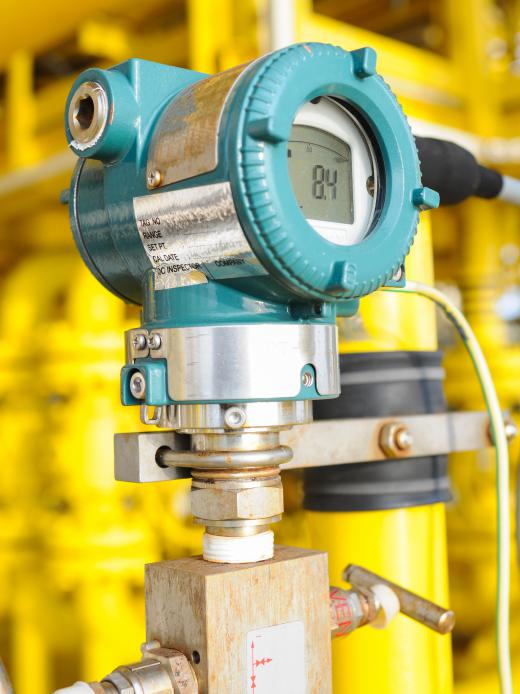As a means of monitoring activity in a number of manufacturing facilities, marine research, and general production control, a pressure transmitter will not only help to ensure positive results, it also can be a great way of maintaining acceptable levels of safety. Within a factory setting, one helps to accomplish two specific goals. First, pressure instruments monitor the amount of pressure applied to a part of the process that is required in order to achieve the desired result. Since the application of too much or too little pressure may result in product that cannot be sold, constant real-time measurements of the pressurized environment is absolutely necessary.
In other manufacturing applications, a pressure transmitter may be used to make sure that no machinery is building up pressure that is beyond levels that are considered safe for the operators. Should a machine malfunction push the pressure beyond acceptable levels, the transmitter alerts the operator, who can take steps to shut down the machinery and thus avert an industrial accident.

Measuring liquid pressure is another way that a transmitter can be used in the care and maintenance of costly equipment. As an example, an automobile uses oil as one of the liquids required for operation, and a certain level of oil pressure has to be maintained in order for the vehicle to run properly. Diaphragms, often spring operated types, are connected to a variable resistor. This acts as a means of monitoring the level of oil pressure in the engine. In modern vehicles, this allows the resistor to adjust the voltage level to maintain the right balance between voltage and oil pressure. When this balance cannot be achieved due to low oil pressure, the dash light for oil lights up. The warning light allows the operator to know it is time to check on the oil level in the vehicle before there is costly damage done to the engine.

The pressure transmitter comes in a number of shapes and sizes. One, referred to as a Bourdon Tube, is designed especially for monitoring non-liquid pressure. They are relatively inexpensive and good for measuring air and gas pressure in compressors. The tubes may be c-shaped, spherical and helical.
These transmitters perform the important job of making sure machinery and equipment is working properly, as well as providing warning when pressures are building to unsafe levels.

